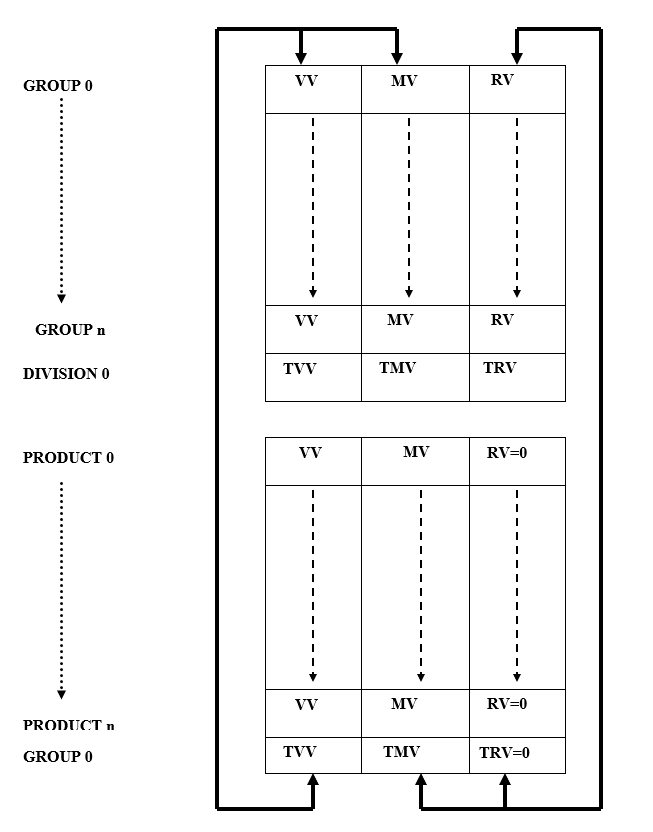
CONSOLIDATION / DATA MINING
Rollup Variance . . .
Companies are organized into hierarchically structured datasets. For example, Products roll up into Groups; Groups roll up into Divisions; Divisions roll up
into a fully consolidated Company. In order to provide mathematical/accounting consistency (as well as an all important Drill Down capability), the use of a Rollup Variance accumulator
is required. Rollup Variance functions as an accumlator of Mix Variances throughout the hierarchical dataset. Rollup Variance, at any level of consolidation, is equal
to [Rollup Variance plus Mix Variance] accumulation brought forward from the immediately preceding lower consolidation level. Note that Rollup Variance accumulation starts at 0
at the lowest (i.e., Product) level of the Consolidation Hierarchy.
The figure below illustrates the flow of variances as Products roll up into a Group and Groups roll up into a Division.

Hierarchical Mix Analysis Protocol
The upper half of Hierarchical Mix Analysis Protocol, shows what is involved. The basic analysis computations (shown above) are now carried out on Group 0 at the Division 0 level; "Product" is now "Group" for purposes of the analysis. Note that, unlike Group 0, Division 0 is a group comprised of "groupings"; Group 0 was a group comprised solely of individual products. Group 0's Total Volume Variance (TVV) summation becomes a Volume Variance (VV) and a Mix Variance (MV) at the next higher level of grouping (Division 0); the Total Volume Variance (TVV) of Group 0 is precisely split into a Volume Variance (VV) and a Mix Variance (MV) for Division 0. The Total Mix Variance (TMV) of Group 0 becomes the newly formed (carried upward) profit rate variance called Rollup Variance (RV) of Group 0 at the Division 0 grouping level. The total volume variance of Division 0 is explained by its' TVV summation; the total profit rate variance of Division 0 is explained by the combination (simple addition) of Division 0’s TMV and TRV (Total Rollup Variance). Once again, performing the calculation on a Group-by-Group basis gives the important advantage of knowing the sources of the volume and mix variance components of Division 0 (the Division comprised of Groups). The process simply repeats as we extend the analysis to successively higher levels of "grouping". The Total Mix Variance (TMV) and Total Rollup Variance (TRV) of the "lower" group are combined (added together) before being carried upward to the Rollup Variance (RV) of the "higher" group.